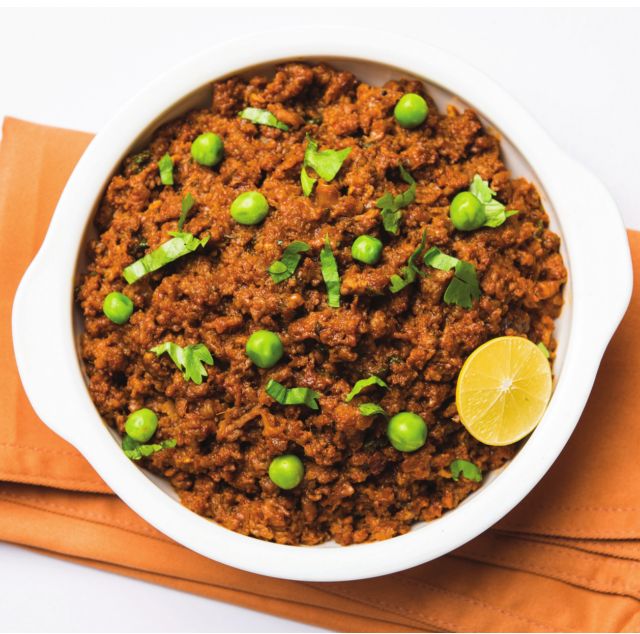
Amazon fires remind us to buy beef at home
As fires raging in the Amazon rainforest dominate recent news, the global importance of eating local has never been more apparent. While public attention to these wildfires is new, the fires are not a sudden phenomenon, nor are they accidental. For years, cattle ranchers and loggers have been setting fires to sections of the rainforest to clear land for beef production. Cattle ranching is the largest driver of deforestation in the Amazon and is responsible for 80 percent of the current deforestation rates, according to the Yale School of Forestry and Environmental Studies. Brazil alone currently supplies nearly one quarter of the global beef market, a figure that is projected to increase in coming years as cattle ranching progresses further into the Amazon. All this deforestation is driven by an ever-increasing beef market, and the devastating ramifications of a meat-hungry world population extend far beyond the lush Amazon rainforest.
Many environmentalists and animal rights activists say that folks should stop eating meat altogether, so great is the damage inflicted by the global meat industry. However I would like to offer a more nuanced and delicious solution: Eat local.
I stopped buying conventionally raised meat from the grocery store several years ago. There were just too many aspects of large-scale meat production that were profoundly disturbing to me. Reports of devastating animal cruelty, packing plants where undocumented workers are paid meager wages to work in dangerous conditions, and the enormous carbon footprint of mass-produced meat motivated me to change how I shopped for dinner.
I encourage you to stroll down the lanes of the closest farmers market and meet some of the folks who are producing delicious food right here in Illinois. Our community is fortunate to have a bevy of small family farms sustainably raising animals and produce. Where huge monoculture megafarms are often damaging to the environment, these diverse and dynamic small farms seek to improve the local ecology and soil health. And dollars spent on local food stay in our community, helping our neighbors to put dinner on the table and kids through college.
Meat from small local farms is often more expensive than what you’d find at the big-box grocery store, so I’ve had to get creative to make use of the cheaper cuts. We go through a lot of ground beef, pork and lamb in my house. It’s inexpensive
(and many local farmers will give you a discount for buying in bulk),
and quick to thaw and cook, making it perfect for busy weeknights.
If
you can’t make it to the farmers market, locally raised meats are
available in Springfield at Food Fantasies and Willow City Farm store,
and some local farms have buying clubs that offer discounts and monthly
pick-ups, such as Triple S Farms (https://www.triplesfarms.com/) and
Sugar Grove Family Farms (http://www.sugargrovefamilyfarms.com).
As
the weather chills out and the activity schedules ramp up, I’ll be
making lots of quick comfort food dinners out of my stockpile of locally
sourced ground beef, pork and lamb. These recipes are quick and
inexpensive, and a nice way to sneak some veggies onto the plate.
Swedish meatball gravy
1 pound ground beef or pork
½ teaspoon salt
½ teaspoon ground allspice
½ teaspoon coriander
¼ teaspoon black pepper
8 ounces mushrooms, sliced
1 onion, finely chopped
2 stalks celery, finely chopped
3 tablespoons flour
3 cups whole milk, warmed in the microwave or in a saucepan
Chopped parsley, optional Mix together the meat, salt, and spices and let it sit while you chop the vegetables.
Heat
a large heavy-bottomed skillet over medium high heat. Add the seasoned
meat and cook until browned, then add the mushrooms, onions and celery.
Season with a small pinch of salt. Continue to cook until vegetables
begin to soften and turn golden. Add the flour and stir to coat the
vegetables. Add the warmed milk to the mixture in the skillet and stir
to break
up any floury lumps. Bring the mixture to a gentle simmer, then reduce
heat to medium low and continue to cook until thickened and no floury
taste or texture remains.
Spoon
the gravy over egg noodles and garnish with parsley if desired. I like
to serve this alongside a simple steamed green veggie or salad. The
gravy freezes beautifully, so don’t be afraid to make a double batch to
save for later.
Keema with peas and potatoes
A kind of Indian chili, this is traditionally made with lamb or poultry, but it will work with whatever you have on hand.
1.5 pounds ground beef
3 tablespoons vegetable oil
1 teaspoon cumin seeds
2 bay leaves
A pinch of red pepper flakes, optional
1 onion, diced
2 tablespoons grated fresh ginger
5 garlic cloves, minced
2 teaspoons ground coriander
2 teaspoons ground cumin
1-2 teaspoons ground turmeric
1 teaspoon chili powder
2 teaspoons garam masala
1 tomato, chopped
1 cup frozen peas
2 medium potatoes, diced
½ cup plain yogurt
Salt to taste Juice of one lemon Basmati rice to serve Cilantro for garnish Heat the oil over medium in a large sauté pan.
Add
the cumin seeds, bay leaves and red pepper flakes (if using) and cook
briefly in the oil, then add the chopped onion, garlic and ginger.
Season with a pinch of salt and continue to cook until lightly browned.
Add the red chili powder, ground cumin, coriander, garam masala and
turmeric and stir to combine, then add the tomato and yogurt, and bring
to a simmer. Add the meat and another pinch of salt and stir, breaking
up the meat as it cooks for 2-3 minutes. Add the potatoes, and another
cup of water and stir to combine, then cover and cook on low heat for
20-25 minutes. Uncover and stir in the peas and the lemon juice, being
back to a simmer for 5 more minutes. Serve over hot, basmati rice and
garnish with chopped cilantro.